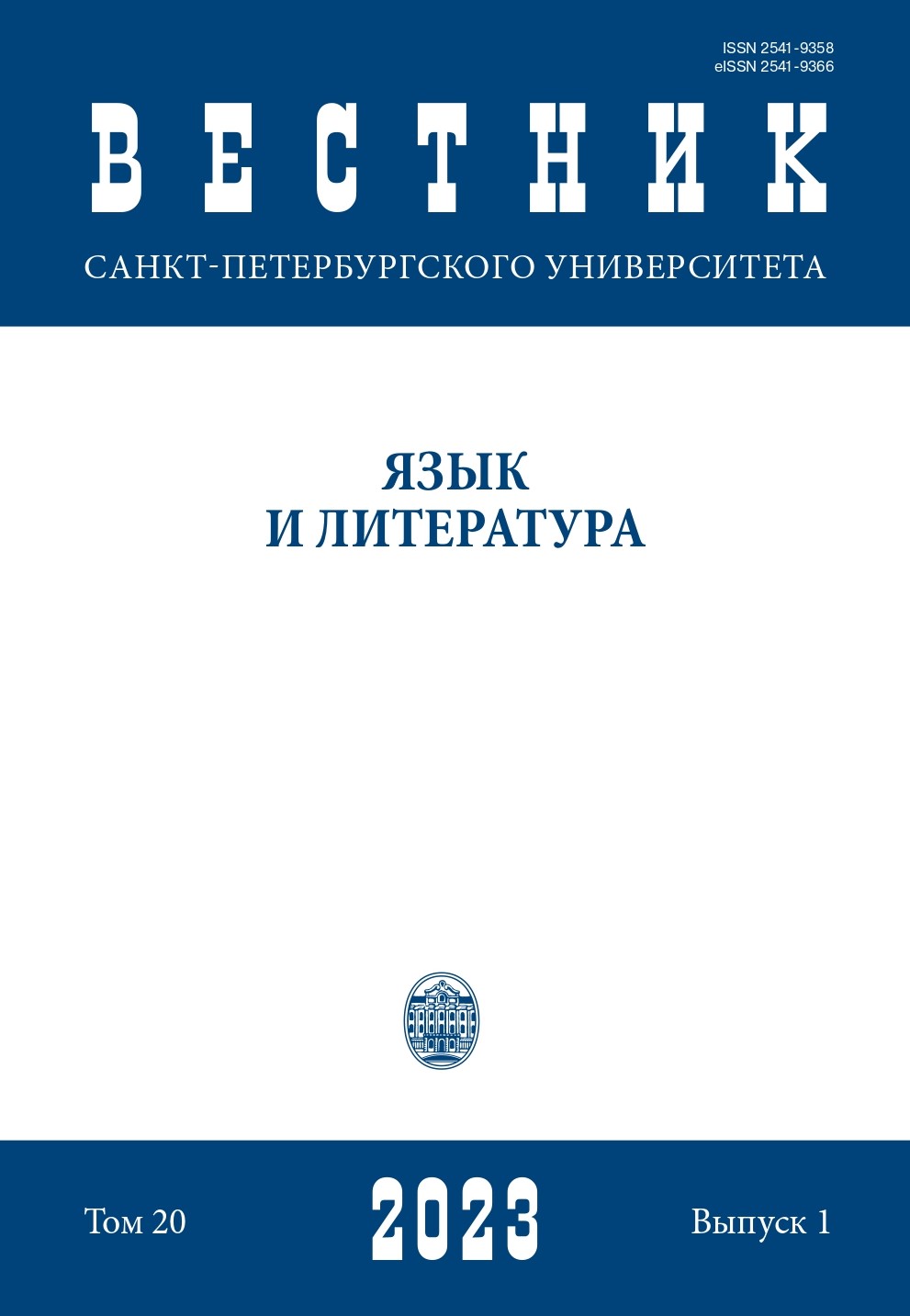Metaphor as a means of describing flavor in the contemporary English-speaking culture
DOI:
https://doi.org/10.21638/spbu09.2023.105Abstract
The paper presents an analysis of metaphors used to describe flavor in the 21st century English-speaking culture. The analysis is based on the modern theories of taste developed within the Humanities and the most relevant ideas of Metaphor Studies. Among the latter is J.Zinken’s Discourse Metaphor Theory. According to it, metaphor can serve as a framing device, setting conceptual landmarks for oral and written narratives. The research was conducted on the basis of the culinary show MasterChef. The author made a sample of five hundred metaphors, which is representative enough to achieve the main objective of the research: to reveal the patterns of metaphorical activity in conceptualizing flavor and model the metaphoric landscape of flavor. The research shows that the metaphoric landscape of flavor is constructed around several discourse metaphors: flavor is an event, flavor is a dimensional object, flavor is balance, flavor is a living being, flavor is a form of art. Each discourse metaphor can be used as it is, represented in speech by the most typical verbal means. It can also be represented by its subordinate forms. For instance, the subordinate forms for the event metaphor are flavor is motion, flavor is an impact, flavor is an explosion, and others. Genetically different metaphors may be combined within one description conveying different aspects of flavor. Metaphor expands the repertoire of means used for communicating flavor experience and is a full-fledged means of its cognition and verbalization, alongside qualia terms.
Keywords:
flavor, verbalization, conceptual metaphor, discourse metaphor
Downloads
References
Литература/References
Нагорная 2014 — Nagornaia A.V. The Discourse of the Inexpressible: Verbalics of Intra-Bodily Sensations. Мoscow: Lenand Publ., 2014. (In Russian)
Danesi 1992 — Danesi M. Metaphorical competence in second language acquisition and second language teaching: The neglected dimension. In: Georgetown University round table on languages and linguistics. Washington D.C.: Georgetown University Press, 1992. P. 125–136.
Hoffmann 2016 — Hoffmann V. von. From gluttony to Enlightenment: The world of taste in Early Modern Europe. Chicago: University of Illinois Press, 2016.
Holmes 2017 — Holmes B. Flavor: The science of our most neglected sense. New York: W.W.Norton & Company, 2017.
Korsmeyer 1999 — Korsmeyer C. Making sense of taste. New York: Cornell University Press, 1999.
Kövecses 2015 — Kӧvecses Z. Where metaphors come from: Reconsidering context in metaphor. Oxford: Oxford University Press, 2015.
Lakoff, Johnson 1980 — Lakoff G., Johnson M. Metaphors we live by. Chicago; London: University of Chicago Press, 1980.
Macpherson 2011 — Macpherson F. Individuating the senses. In: The Senses: Classical and contemporary philosophical perspectives. Oxford: Oxford University Press, 2011. P. 3–46.
Mani 2012 — Mani I., Pustejovski J. Interpreting motion: Grounded representations for spatial language. New York: Oxford University Press, 2012.
Maynard et al. 1965 — Maynard A.A., Pangborn R.M., Roessler E.B. Principles of sensory evaluation of food. New York: Academic Press, 1965.
Shepherd 2012 — Shepherd G.M. Neurogastronomy: How the brain creates flavor and why it matters. New York: Columbia University Press, 2012.
Tay 2020 — Tay D. Co-constructing ‘crisis’ with metaphor: A quantitative approach to metaphor use in psychotherapy talk. In: The language of crisis. Metaphors, frames and discourses. Amsterdam: Benjamins, 2020. P. 231–253.
Vannini 2010 — Vannini Ph., Guppy A.-L., Waskul G., Gottschalk S. Performing taste at wine festivals: A somatic layered account of material culture. Qualitative Inquiry. 2010, (16): 378–396.
Vercelloni 2016 — Vercelloni L. The invention of taste: A cultural account of desire, delight, and disgust in fashion, food and art. London, New York: Bloomsbury Academic, 2016.
Wistoft 2020 — Wistoft K., Qvortrup L. Seven dimensions of taste: Taste in a sociological and educational perspective. In: Gastronomy and food science. Galanakis C. (ed.). Amsterdam: Elsevier, 2020. P. 227–251.
Zinken 2007 — Zinken J. Discourse metaphors: The link between figurative language and habitual analogies. Cognitive Linguistics. 2007, 18 (3): 445–466. https://doi.org/10.1515/COG.2007.024
Downloads
Published
How to Cite
Issue
Section
License
Articles of "Vestnik of Saint Petersburg University. Language and Literature" are open access distributed under the terms of the License Agreement with Saint Petersburg State University, which permits to the authors unrestricted distribution and self-archiving free of charge.






